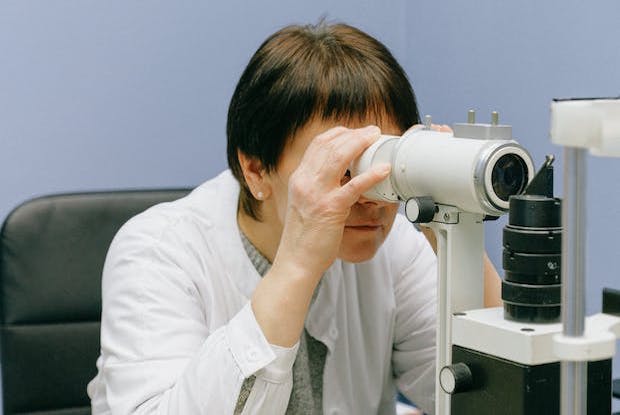Table of Contents
b. What is Rheumatoid Arthritis?
b. Where does Rheumatoid Arthritis Occur?
b. What Causes Rheumatoid Arthritis?
b. How is Rheumatoid Arthritis Treated?
Overview
Gout and rheumatoid arthritis (RA) are two common forms of arthritis. Both conditions cause severe pain and inflammation in the joints. Both conditions can affect any joint, and these types of arthritis can be confused when they occur in the hands or feet. It is important that your condition is diagnosed correctly in order to get the appropriate treatment.
Although these conditions are separate with different causes, symptoms, and treatments, there can be an overlap. Approximately two percent of RA patients also suffer from gout. [1]
However, there are several differences between the two conditions. Keep reading to learn more about these forms of arthritis, including their symptoms, causes, and how they can be treated with medications such as Colcrys (colchicine) and prednisone.

a. What is Gout?
Although arthritis is not in the name, gout is a form of the condition. In the United States alone, gout affects more than eight million people, causing severe pain and swelling. [2] Three times as many men have gout than women. [1] Gout causes joints to swell and causes extreme pain.
Gout pain occurs in episodes. Typically, pain flares up overnight and lasts for several days or weeks. These flare-ups are usually followed by a period of remission that may last for years.
b. What is Rheumatoid Arthritis?
Rheumatoid arthritis is another inflammatory form of arthritis that causes severe pain and swelling. Around 1.3 people in the United States suffer from rheumatoid arthritis. [3] Rheumatoid arthritis can affect anyone at any age. Unlike gout, RA is more common in women. Women are around two to three times likely to develop RA. For women, rheumatoid arthritis usually begins between the ages of 30 to 60 but may occur later in men. [3]
Rheumatoid arthritis causes joints to swell up and become tender and warm to the touch. Other symptoms of RA include joint stiffness (especially in the mornings), loss of appetite, fatigue, and fever [4]. Similarly to gout, RA pain comes in periodic flares with times of remission in between.
Where do They Affect?
a. Where does Gout Occur?
Both gout and rheumatoid arthritis can affect any joint in the body. Gout is commonly found in the fingers, toes, elbows, and knees. However, more than 50 percent of the time, gout is located in the big toe. [5]
b. Where does Rheumatoid Arthritis Occur?
Typically, rheumatoid arthritis starts in the smaller joints such as the fingers and toes, before spreading to other joints such as the wrists, knees, ankles, hips, and shoulders. Usually, RA affects the same joints on both sides of the body [4]. Unlike gout, which only affects joints, RA can also affect non-joint structures including, body organs, glands, and tissues. Approximately 40 percent of RA patients have non-joint related symptoms. [4]

How Are They Caused?
a. What Causes Gout?
Gout is caused by a build-up of uric acid in the body. The body produces uric acid in order to break down purines found in the foods we eat. It is really important, therefore, for gout patients to avoid and limit high purine foods. Urate crystals are formed when there is a build-up of uric acid. These crystals usually occur overnight when temperatures drop. The crystals are needle-sharp, causing pain. When this pain occurs, the body issues an inflammatory response, causing swelling.
b. What Causes Rheumatoid Arthritis?
Rheumatoid arthritis is an autoimmune condition that occurs when the body’s immune system attacks healthy cells. For most people, their immune system creates antibodies that are used to attack and destroy foreign substances, such as bacteria and viruses in order to prevent infections. For RA patients, their immune systems send these antibodies to their joint linings, where they attack the tissue, causing damage and inflammation. [6]

How Are They Treated?
a. How is Gout Treated?
There are several prescription medications used to treat gout. Colcrys (colchicine) and prednisone can be used to relieve pain caused by gout. Doctors may also prescribe Uloric (febuxostat) and Zyloprim (allopurinol) to reduce the frequency of future attacks.
Lifestyle changes are also important for gout patients. Mild cases of the condition can be managed by limiting and avoiding foods that are high in purines. Losing weight can also help overweight patients to reduce the severity of gout episodes.
b. How is Rheumatoid Arthritis Treated?
Rheumatoid arthritis is a chronic condition with no cure. However, treatment can help to reduce the risk of joint damage. Often treatment involves disease-modifying anti-rheumatic drugs (DMARDs). DMARDs block the effects of chemicals that damage the joints during an attack by antibodies. [6] Patients with RA may also be given painkillers such as prednisone.
The content in this article is intended for informational purposes only. This website does not provide medical advice. In all circumstances, you should always seek the advice of your physician and/or other qualified health professionals(s) for drug, medical condition, or treatment advice. The content provided on this website is not a substitute for professional medical advice, diagnosis or treatment.
